The Shining 60-Year History of Calculators: What Is Your Memorable Calculator?
July 10, 2024
Recently, while tidying up my parents’ house, I found a memorable calculator I used as a child. This year, 2024, marks the 60th anniversary of Sharp launching its calculators. On this milestone year, let’s explore the fascinating world of calculators while tracing the 60-year journey. I will introduce my memorable calculator later.
■History of Calculators
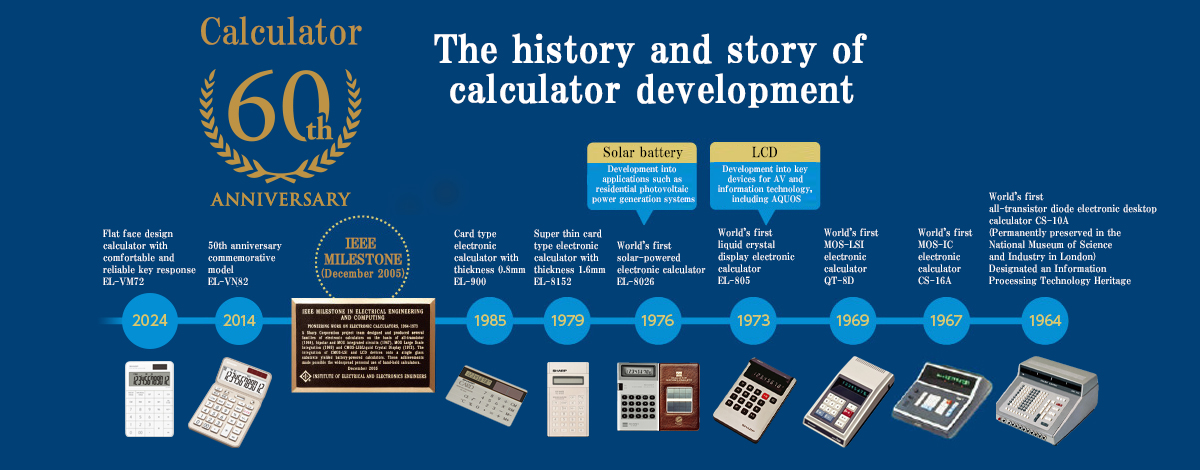
60 years ago, in 1964, Sharp introduced the world’s first all-transistor diode desktop calculator, the Compet, CS-10A. This product is noted in the company’s history as laying the foundation for the company as a comprehensive electronics manufacturer. The experience of developing this calculator became the cornerstone for creating various products the company has today.
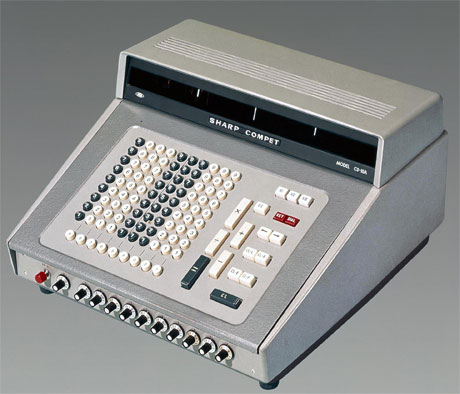

The CS-10A, weighed 25 kg and sold for 535,000 yen – about the same price as a passenger car, but it significantly improved efficiency in offices and accounting departments. Recognized for this achievement, it was certified as an “Information Processing Technology Heritage” by the Information Processing Society of Japan, marking its contribution to the development of Japanese information processing technology.
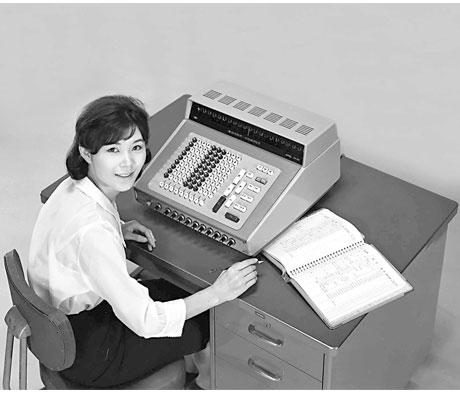
The second model, CS-20A, was released in 1965, featuring silicon transistors and a numerical keypad to reduce costs. It weighed 16 kg and sold for 379,000 yen.
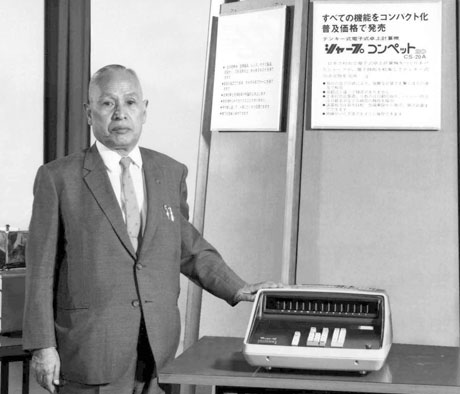
Further aiming for “cheaper, lighter, and smaller,” the company embarked on developing personal calculators. To make this dream a reality, the company decided to conduct joint research with a semiconductor manufacturer to develop ICs (integrated circuits), which were making dramatic progress in response to rapidly growing demand in the aerospace and arms industries in the US.
In 1966, the company developed the CS-31A, the world’s first calculator to use bipolar ICs(28ICs). Eventually more than 70% of bipolar ICs produced would be used for calculators, and calculators were to be a major driver of Japan’s semiconductor industry.
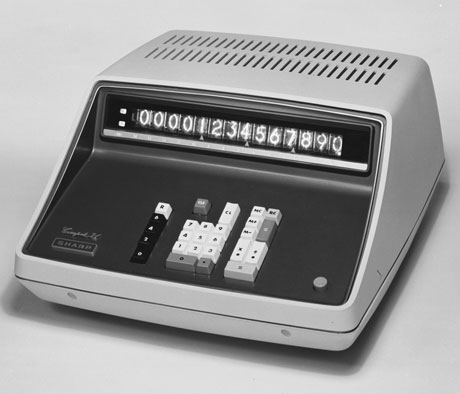
The quest for small, light calculators then began to focus on MOS (metal oxide semiconductor) ICs, which had higher density and consumed less power than previous ICs.
In 1967, after overcoming numerous hurdles, the company released the CS-16A, a calculator employing MOS ICs. Compared to the first model, this product cost less than half (230,000 yen), weighed just one-sixth(4kg), and was just one-third as large.
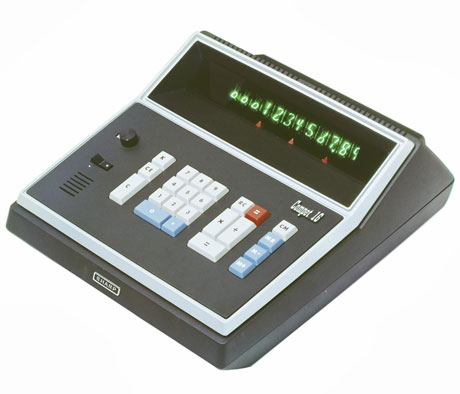
The next semiconductor technology to emerge was the LSI (large-scale integrated circuit), which boasted far greater density and made possible much smaller products. But Japanese semiconductor companies were experiencing low yield ratios and so were unable to supply MOS LSIs for calculators. Thus, the company turned to American MOS LSIs, leading to the release in March 1969 of the QT-8D Micro Compet calculator. It was compact and lightweight, with dimensions of 135 mm in width, 247 mm in depth, 72 mm in thickness, and a weight of 1.4 kg.
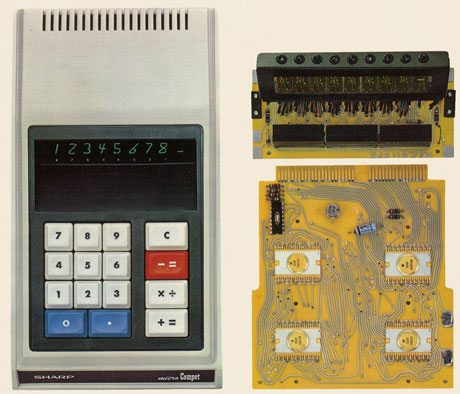
Entering the 1970s, the utilization of LSIs for major components progressed, and that made it easier for businesses to get into the market for electronic calculators. This caused severe competition in sales of electronic calculators, which would later become known as the “electronic calculator war.”
To differentiate from other companies, the company shifted its focus from miniaturization to thinness, using C-MOS for LSIs and adopting LCDs for displays to try to achieve low power consumption, a key point for thinness. The development of LCDs was extremely challenging, but after confirming a prototype completed in early 1972, the company decided to position LCDs as the company’s next strategic product.
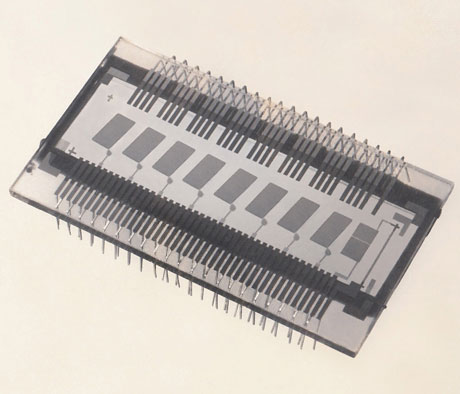
The first calculator in the world to feature this LCD was the EL-805 Liquid Crystal Compet, released in 1973. It achieved long battery life (100 hours of continuous use from a single AA battery) and thinness (20 mm thick).
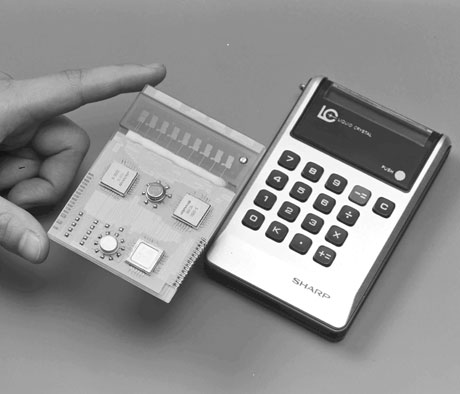
The display element of the EL-805 was a DSM (Dynamic scattering mode) LCD. This LCD required high drive voltages and its response time slowed at low temperatures. This issue was overcome with TN (Twisted Nematic) LCD, which were equipped in the EL-8020 released in 1976.
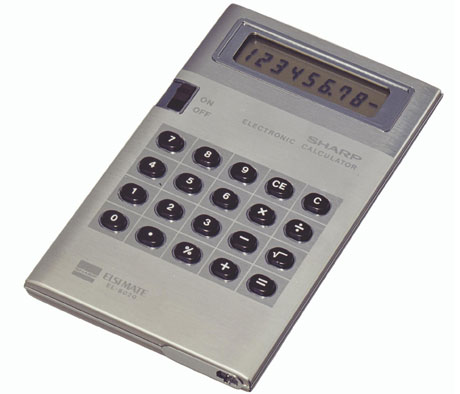
In the same year, Sharp released the world’s first solar-powered calculator, the EL-8026, allowing use without worrying about battery life. At that time, solar cells were mainly used for lighthouses and space, but mass production for calculators led to significant development. This industry has since grown into a rapidly developing field, from residential solar power systems to mega solar projects.
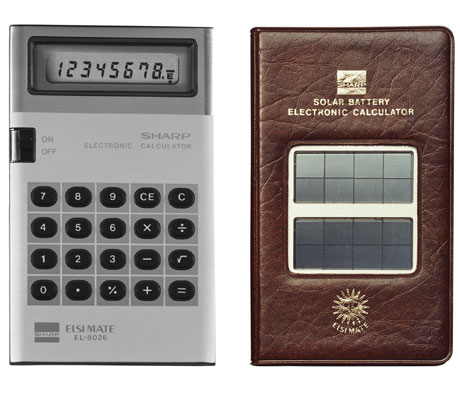
Sharp calculators have been recognized as an IEEE Milestone by the IEEE, an international academic society in the area of electricity and electronics. The honor recognizes innovative initiatives undertaken by Sharp from 1964 to 1973 to miniaturize calculators and reduce their power consumption.
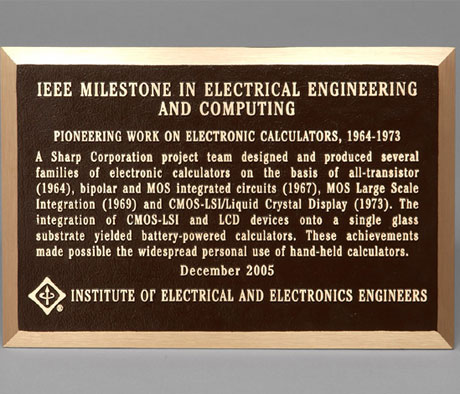
The technologies established during the development of calculators have become the foundation of the company and have greatly contributed to the company’s subsequent development.
■Various Calculator Variations
After establishing core technologies such as LSI, LCD, and solar cells, Sharp has released a variety of calculator designs. These include designs integrating a pencil case and calculator, pocket calculator that can be worn as an accessory, calculator with clock, card-type calculator with radio, and calculator with transparent acrylic ruler. These variation calculators, developed in line with the times, have captured people’s hearts.

Among them, the fashion calculator, WN-30, released in 1986, with its playful and unique design, is a memorable item for me. Its pop and colorful design left me puzzled at first about what it was and how to use it. This feature led to fun moments with friends, asking, “What does this look like?” and “How do you open it?” These memories are precious to me, and I still keep this favorite calculator with my cherished memories.

Do you have any calculators filled with Sharp’s technology or unique calculators sleeping in your home? These calculators might be more than just calculating devices; they could be special items weaving memories and playfulness. Please reunite with these calculators and create new memories.
■New Model for the 60th Anniversary
After the history introduced, Sharp released a new model on its 60th anniversary in February 2024. The design calculator, EL-VM72, features a stylish form with a flat key design and comfortable, reliable key response.
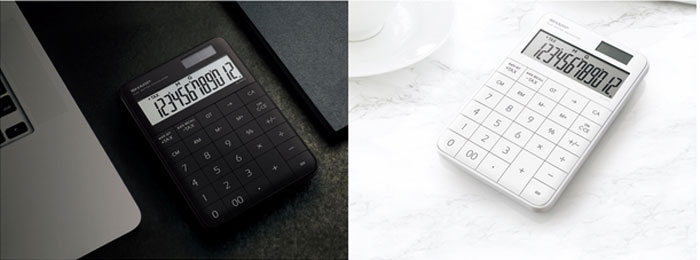
<Related Sites>
■Product Site: Calculator Product Page




